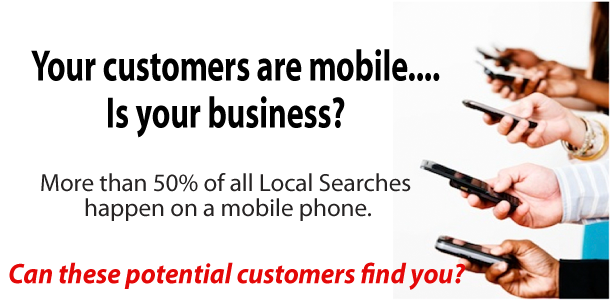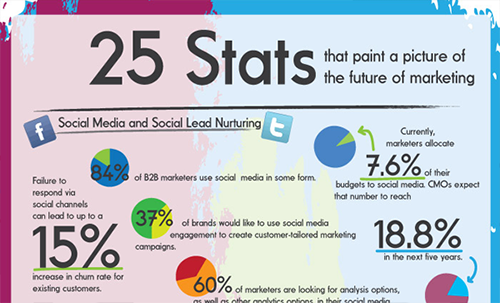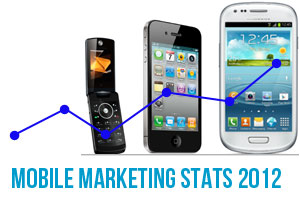Mobile Web Strategy for Small Business
Let’s play a game of pictionary here. Let’s say you are a local business and you want to produce a mobile site to draw bigger business in. What do you do?
Do you place more ad’s in the local paper? Do you make calls to your local radio station? What about more television commercials? What about a mobile website?
Aha, there’s that light bulb I’ve been waiting to see. Let me tell you how a mobile website can help your small business and help you gain more customers than you could ever imagine.
For starters, small businesses haven’t quite grasp the concept of creating a mobile presence for their business. Many reasons include, the non-realization of consumers changing their purchasing ways, business owners of small companies don’t understand how mobile marketing functions and how those functions work. They also are not aware of the effect of mobile marketing and what it can do for their company.

Statistics show, out of all the mobile searches, one in three is of local intent. 61% of smartphone users search for local content. 52% of the local searches result in calls made by the customer. While 59% of customers who search on the mobile web for local places, end up visiting the store they searched for.
Just like pictionary, begin with an objective in mind. How are you going to portray your “secret?” For your business, what do you want to do? Do you just want to bring more customers in? Do you want to get involved with your company and the community more? Generate calls to your business? Have a goal in mind, even if its small. Start small and end big.
Next, create a resolution and design it. How are you going to act out this clue? How are you going to make your goal achievable? Lay it out, create a template or design on what you want included on your mobile site. Now remember, it must be clear content, contrasted correctly, simple to read, easy to load, etc. Have keywords listed, so your company will be easy to find. Make sure your address, phone number, email, etc., is easy to access. Remember a happy customer means a happy owner.
Thirdly, in pictionary you want it to be easy to view (read) so the guesser can figure it out quickly. Same thing with designing a mobile website. You want your site to look great on a small hand held device. Code it so content is visible easily, and updated regularly.
Lastly, in three-two-one LAUNCH that thing. Promote your site so the likely increase of customers visiting increases. With good search content and (SEO) your site will be found more and more over time. The more people who visit and see your site the more likely it is to arrive at the top of a search page. As I said in an earlier blog post, reputation is everything.
Many small business owners have taken such help hints like the ones listed above and have already applied them to their mobile marketing strategy. They are finding rather quickly that results are positive. 69% of small business owners are crediting mobile sites for their business growth and believe that number will rise in the next few years.

But, what goes up must come down. Unfortunately there is a wide gap seen today between small business who do have a mobile site to those who do not. Over 61% of small business currently do not have a mobile strategy made and are missing out on the consumers that are searching for what they may offer on a mobile device.
Owners are realizing that having a mobile-friendly site provides better service to their customer, attracts more customers even more local customers over time, and they gain a competitive advantage over all other competing stores.
There is hope though, I, and hopefully you can see the light at the end of the tunnel. 64% of small business have said that they have spent more money in 2012 than any other year towards a mobile web strategy. That number is expected to rise drastically by 2015.
We’re getting there fellow mobile friends, we’re getting there.








